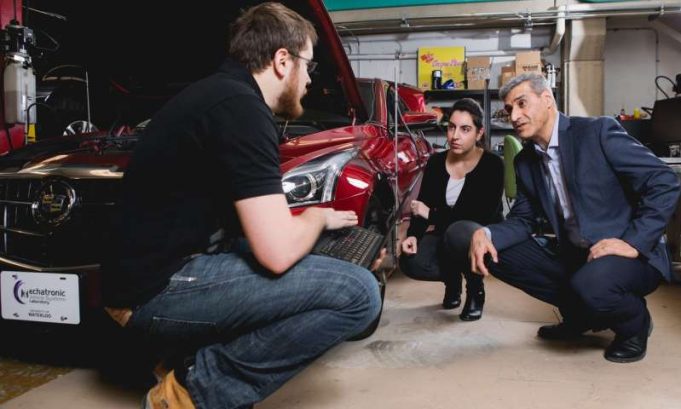Researchers at Carnegie Mellon University have used an inexpensive 3-D printer to produce flat plastic items that, when heated, fold themselves into predetermined shapes, such as a rose, a boat or even a bunny.
Lining Yao, assistant professor in the...
Diamond is well-known as the strongest of all natural materials, and with that strength comes another tightly linked property: brittleness. But now, an international team of researchers from MIT, Hong Kong, Singapore, and Korea has found that when grown...
Researchers playing with a cloud of ultracold atoms uncovered behavior that bears a striking resemblance to the universe in microcosm. Their work, which forges new connections between atomic physics and the sudden expansion of the early universe, will be...
A new study has revealed for the first time the last 500-year flood history of the Mississippi River. It shows a dramatic rise in the size and frequency of extreme floods in the past century -- mostly due to...
Materials inspired by disappearing Hollywood dinosaurs and real-life shy squid have been invented by UCI engineers, according to new findings in Science this Friday.
The thin swatches can quickly change how they reflect heat, smoothing or wrinkling their surfaces in...
Optoelectronic engineers in China and Hong Kong have manufactured a special type of liquid crystal display (LCD) that is paper-thin, flexible, light and tough. With this, a daily newspaper could be uploaded onto a flexible paperlike display that could...
It may in the future be possible to harvest energy with the aid of leaves fluttering in the wind. Researchers at the Laboratory of Organic Electronics at Linköping University have developed a method and a material that generate an...
Researchers at the University of Illinois at Chicago and at Argonne National Laboratory have designed a new lithium-air battery that works in a natural-air environment and still functioned after a record-breaking 750 charge/discharge cycles. Their findings are reported in...
The maser (microwave amplification by stimulated emission of radiation), the older microwave frequency sibling of the laser, was invented in 1954. However unlike lasers, which have become widespread, masers are much less widely used because in order to function...
Technology developed at the University of Waterloo reliably and affordably increases the efficiency of internal combustion engines by more than 10 per cent.
The product of a decade of research, this patented system for opening and closing valves could significantly...
Nuclear fusion, the process that powers our sun, happens when nuclear reactions between light elements produce heavier ones. It's also happening -- at a smaller scale -- in a Colorado State University laboratory.
Using a compact but powerful laser to...


















